How to Train Your Staff for Advanced OEM Maintenance Management
So you’ve built cool machines, sold them to happy customers, and offered maintenance services to keep them humming. Brilliant! But wait—who’s actually going to perform all that maintenance? Your team needs proper training to deliver top-notch OEM maintenance management. This guide will walk you through setting up a comprehensive training program that transforms your regular staff into maintenance wizards. Advanced maintenance capabilities aren’t just nice-to-have anymore; they’re essential for OEMs looking to maximize their service revenue.
Why effective maintenance staff training matters for OEMs
Let’s face it—machines break. But when you’re an OEM offering maintenance services, breakdowns aren’t just inconvenient; they’re profit-killers. Well-trained staff can diagnose issues faster, fix problems more efficiently, and keep your customers happy while maintaining healthy margins for your business.
Training your maintenance team properly means the difference between “We’ll send someone next week” and “We’ll have you up and running in hours.” That difference can be worth thousands in customer loyalty and repeat business. Preventive maintenance skills are particularly valuable, as they help you avoid emergency service calls altogether.
With Fter.io helping you manage the technical side of maintenance tracking and scheduling, having a properly trained team completes the picture—letting you deliver exceptional service without working yourself into an early grave.
Essential skills and knowledge for OEM maintenance teams
Not all maintenance skills are created equal. Your team needs a specific mix of technical and soft skills to excel:
- Deep equipment knowledge: Understanding how your machines function at a component level
- Diagnostic abilities: Quickly pinpointing issues using troubleshooting methodologies
- Data analysis: Making sense of machine data to predict and prevent failures
- Communication skills: Explaining technical issues to non-technical customers
- Documentation proficiency: Creating clear service reports that provide value
The most valuable team members are those who combine technical expertise with problem-solving abilities. They’re the ones who can look at a machine, listen to it running, and say, “Ah, I see what’s happening here” before diving in to fix it.
This blend of skills doesn’t happen by accident—it requires structured training and real-world experience. And it’s precisely these capabilities that enable your team to make the most of platforms like Fter.io, which can store historical maintenance data and help technicians make informed decisions.
How to develop a structured maintenance training program
Creating a training program doesn’t have to feel like building another machine from scratch. Here’s a straightforward approach:
- Assess current skill levels: Identify what your team already knows and where gaps exist
- Set clear learning objectives: Define exactly what skills you want your team to develop
- Create a blend of learning methods: Combine classroom training, hands-on practice, and digital learning
- Develop progression paths: Map out how team members can advance from basic to advanced skills
The best training programs include plenty of hands-on practice. Book learning is nice, but maintenance is a tactile skill. Let your team get their hands dirty in a safe environment before they’re working on a customer’s mission-critical machinery.
Consider creating maintenance scenarios that integrate with your management software. This allows technicians to practice not only fixing issues but also properly documenting their work and tracking parts usage—skills that directly translate to better service delivery and profitability.
Implementing technology-driven maintenance workflows
Train your team to leverage data-driven insights from your machines. When using a platform like Fter.io, technicians can access historical maintenance data, machine performance metrics, and even predictive analytics that help them work smarter, not harder.
Remember that resistance to new technology is normal. Include change management techniques in your training to help staff understand why these new workflows matter and how they make their jobs easier (not just different).
How can you measure maintenance training effectiveness?
If you can’t measure it, you can’t improve it. For maintenance training, consider tracking:
- Time to resolution: Are problems being fixed faster?
- First-time fix rate: Are technicians solving problems without return visits?
- Customer satisfaction scores: Do customers notice the difference?
- Parts usage accuracy: Are technicians correctly identifying and replacing the right components?
- Knowledge assessment scores: How well do technicians perform on skills tests?
The most telling metric is often first-time fix rate—when your technicians can resolve issues in a single visit, it’s a clear sign that your training is working. This directly impacts customer satisfaction and maintenance profitability.
These metrics can be easily tracked in your maintenance management system, providing visibility into how training investments translate into business results. With Fter.io, you can generate reports that show improvement trends over time, helping justify continued investment in your team’s development.
Overcoming common challenges in maintenance training
Let’s be honest—training isn’t always smooth sailing. Here are typical roadblocks and how to navigate around them:
- Time constraints: Use microlearning approaches—short, focused lessons that fit into busy schedules
- Knowledge hoarding: Create incentives for experienced technicians to share their expertise
- Diverse skill levels: Develop flexible learning paths that accommodate different starting points
- Technology resistance: Pair tech-savvy team members with those who need more support
- Keeping skills current: Implement regular refresher training and update sessions
Perhaps the biggest challenge is balancing training time with productive work. Remember that well-trained technicians ultimately save time and money, making the initial investment worthwhile. Consider implementing a mentoring program where experienced staff can guide newcomers during actual service calls—learning happens in real-time without sacrificing productivity.
When training focuses on both technical skills and efficient use of your maintenance management tools, you’re not just building technical competence—you’re creating a more profitable service operation that can scale as your installed base grows.
With the right approach to staff training and the proper tools like Fter.io to manage your maintenance operations, you’ll build a service team that doesn’t just maintain machines—they maintain your reputation for excellence and your position as a trusted partner to your customers.

